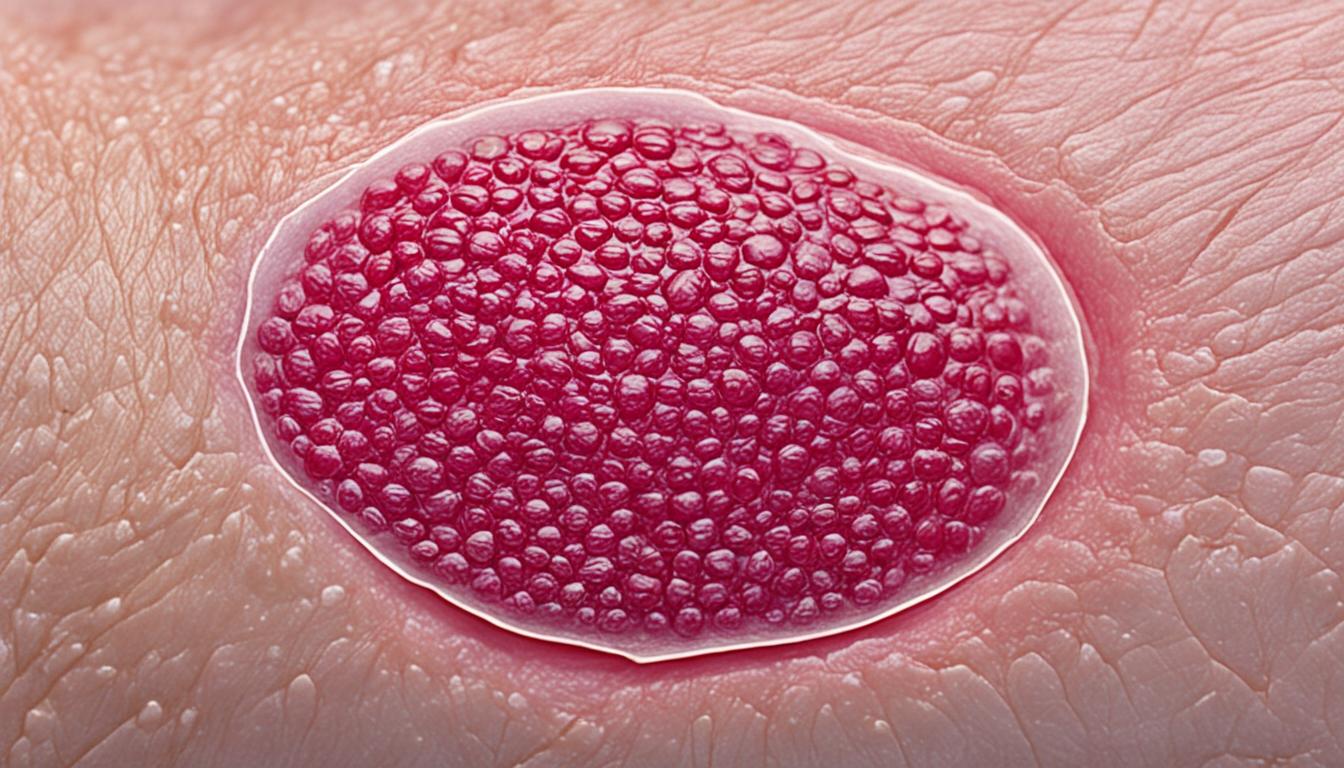Sebaceous cysts, or epidermoid cysts, are very common and not cancerous. They grow in the skin and are often seen on the face, head, neck, back, and genitals. You can recognize them by their shape. They usually look like small yellow, brown, or white bumps. Each might have a tiny blackhead in the middle. These cysts are filled with firm material.
Sebaceous cysts grow slowly and don’t usually hurt. But, they can get bigger or get infected, causing pain and redness. In very rare cases, they could lead to skin cancer. Why these cysts form isn’t completely clear. It is believed that skin cells go deeper into the skin and grow more instead of falling off. Things like going through puberty, having a history of acne, being in the sun a lot, and having skin injuries can make you more likely to get sebaceous cysts.
If a sebaceous cyst doesn’t cause any problems, it might not need treatment. But, if it hurts or doesn’t look good, a doctor might suggest removing it. There are different ways to take them out, like cutting them out, using a laser, or other methods.
Key Takeaways:
- Sebaceous cysts are common noncancerous growths that develop in the skin.
- They can occur on any part of the body, but are most commonly found on the face, head, neck, back, and genitals.
- Sebaceous cysts are slow-growing and usually don’t hurt.
- But they can get bigger, infected, or burst, which causes pain and redness.
- Sebaceous cysts may need to be taken out if they cause problems or don’t look good.
Symptoms and Complications of Sebaceous Cysts
Sebaceous cysts often show various symptoms. They can cause problems if not treated. It’s important to know the signs and risks to manage them well.
Symptoms of Sebaceous Cysts
Sebaceous cysts look like round cysts or small bumps under the skin. They can move and contain solid stuff. A blackhead might be in the middle. You can find them on the face, neck, back, or genitals.
When a cyst gets infected, it can swell, turn red, and hurt. Sometimes, it might break open, leaking a bad-smelling yellow fluid.
Complications of Sebaceous Cysts
If they get inflamed or infected, sebaceous cysts can cause more swelling and pain. Infection often leads to abscesses. These are pus-filled pockets needing medical attention.
Genital cysts can cause pain during sex and urination.
Severity and likelihood of complications can differ. It’s vital to see a doctor when you notice symptoms. This ensures proper diagnosis and treatment.
Symptoms and Complications of Sebaceous Cysts
| Symptoms | Complications |
|---|---|
| Presence of round cysts or small bumps under the skin | Inflammation leading to swelling and pain |
| Filled with solid material, may have a blackhead at the center | Infection resulting in the formation of abscesses |
| Swelling, redness, and pain in the affected area | Genital discomfort, pain during intercourse, and urination (in genital cysts) |
| Rupture of the cyst, releasing a yellowish, foul-smelling fluid |
If you catch sebaceous cysts early and treat them, you can avoid complications. It’s smart to get checked by a doctor. They can suggest the best steps for you.
Diagnosis and Treatment Options for Sebaceous Cysts
Sebaceous cysts need a careful diagnosis. A healthcare professional will look closely. They check the patient’s history too. Sometimes, they might need to do more tests to ensure it’s not cancer.
If a cyst is small and doesn’t hurt, you might not need treatment. But if it swells, gets infected, or looks bad, you might need surgery. There are different ways to take out a cyst, such as cutting it open or using a laser.
Before surgery, you might get antibiotics and pain medicine. It’s very important not to try to pop or squeeze a cyst. Doing so can make things worse, like an infection. Also, it’s smart to keep your skin clean and avoid too much sun. This can help keep new cysts from forming.

